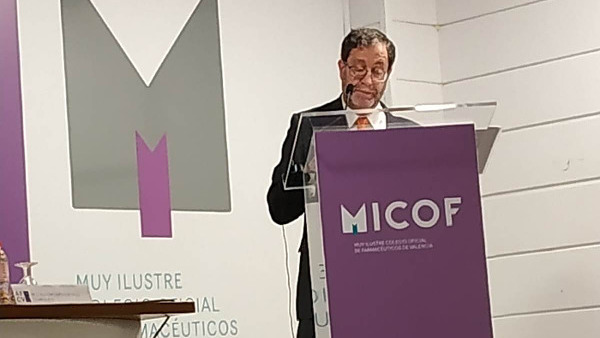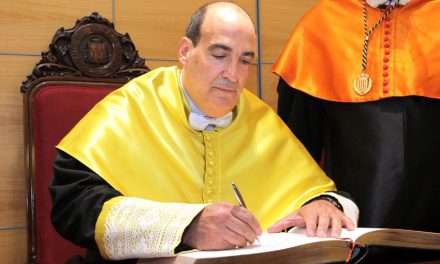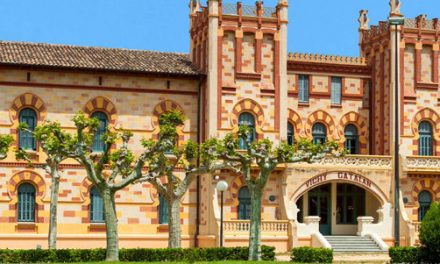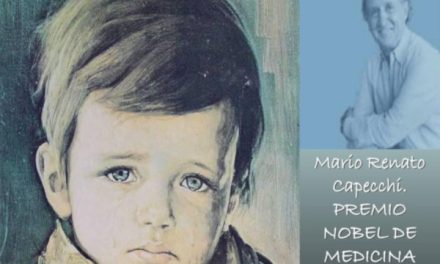Francisco López Muñoz enters at the Academy of Pharmacy of the Valencian Community
 Francisco López Muñoz, professor of Pharmacology and director of the International Doctoral School of the Camilo José Cela University and full academician of the Royal European Academy of Doctors-Barcelona 1914 (RAED), was appointed on March 25th corresponding academician of the Academy of Pharmacy of the Valencian Community, constituted last January. López Muñoz read the admission speech “Sobre el arquetipo del phármakon en la literatura cervantina” (On the archetype of the pharmakon in Cervantes literature), in which he analyzes the four archetypal patterns of the drug using the examples of the literary works of Miguel de Cervantes: as therapeutic remedies (balsams and purgatives), as toxic and poisonous agents (love filters, poisonous potions), as compounds alexifarmacs (horn of unicorn, bezoares stones) and like substances of abuse (ointments of witches). The limits between these four faces of the pharmakon are not, even today, fully profiled, so that the difference between drugs and poisons lies in the administered dose, in the individual susceptibility or in the differential process of organic accumulation. Suffice it to recall, in this sense, the words of Paracelsus in his work “Defenses”: “Everything is poison… but only the dose makes the poison”.
Francisco López Muñoz, professor of Pharmacology and director of the International Doctoral School of the Camilo José Cela University and full academician of the Royal European Academy of Doctors-Barcelona 1914 (RAED), was appointed on March 25th corresponding academician of the Academy of Pharmacy of the Valencian Community, constituted last January. López Muñoz read the admission speech “Sobre el arquetipo del phármakon en la literatura cervantina” (On the archetype of the pharmakon in Cervantes literature), in which he analyzes the four archetypal patterns of the drug using the examples of the literary works of Miguel de Cervantes: as therapeutic remedies (balsams and purgatives), as toxic and poisonous agents (love filters, poisonous potions), as compounds alexifarmacs (horn of unicorn, bezoares stones) and like substances of abuse (ointments of witches). The limits between these four faces of the pharmakon are not, even today, fully profiled, so that the difference between drugs and poisons lies in the administered dose, in the individual susceptibility or in the differential process of organic accumulation. Suffice it to recall, in this sense, the words of Paracelsus in his work “Defenses”: “Everything is poison… but only the dose makes the poison”.
Lopez Muñoz said that Cervantes demonstrated in his works to have extensive knowledge of medicine, possibly from their family environment and friendships, as well as the reading and handling of various treaties in this area. Some of them integrated their private library, such as the “Dioscorides” commented by the Segovian doctor Andrés Laguna. The work that, as the academician has been proposing in his research works, served as a documentary source for the passages of pharmacological and toxicological dye of the Cervantes works. The author of “Don Quixote” also commented in his works the use of different agents in the context of the practice of witchcraft and related magical phenomena. In short, the Cervantes texts, despite not being in any way, scientific treatises, allow an accurate approximation to the uses (and effects) of pharmacological agents in late-Renaissance Spain and explain how a group of drugs could present four archetypal faces; medication, toxic, antidotal and abuse drug.

Among the aims of the Pharmacy Academy of the Valencian Community are the promotion of research and study of pharmaceutical sciences and related sciences, advice to official public bodies in those fields that are their own, advice to private institutions that request it under the conditions that the Academy deems appropriate, the preparation of studies and reports on matters related to the pharmaceutical profession and its activities, the promotion of relations with other analogous institutions , the creation and conservation of material and documentary funds related to teaching, research and the pharmaceutical profession, scientific dissemination and ongoing training of pharmacy professionals and recognition through awards, diplomas or distinctions of activities that benefit from the pharmacy.






